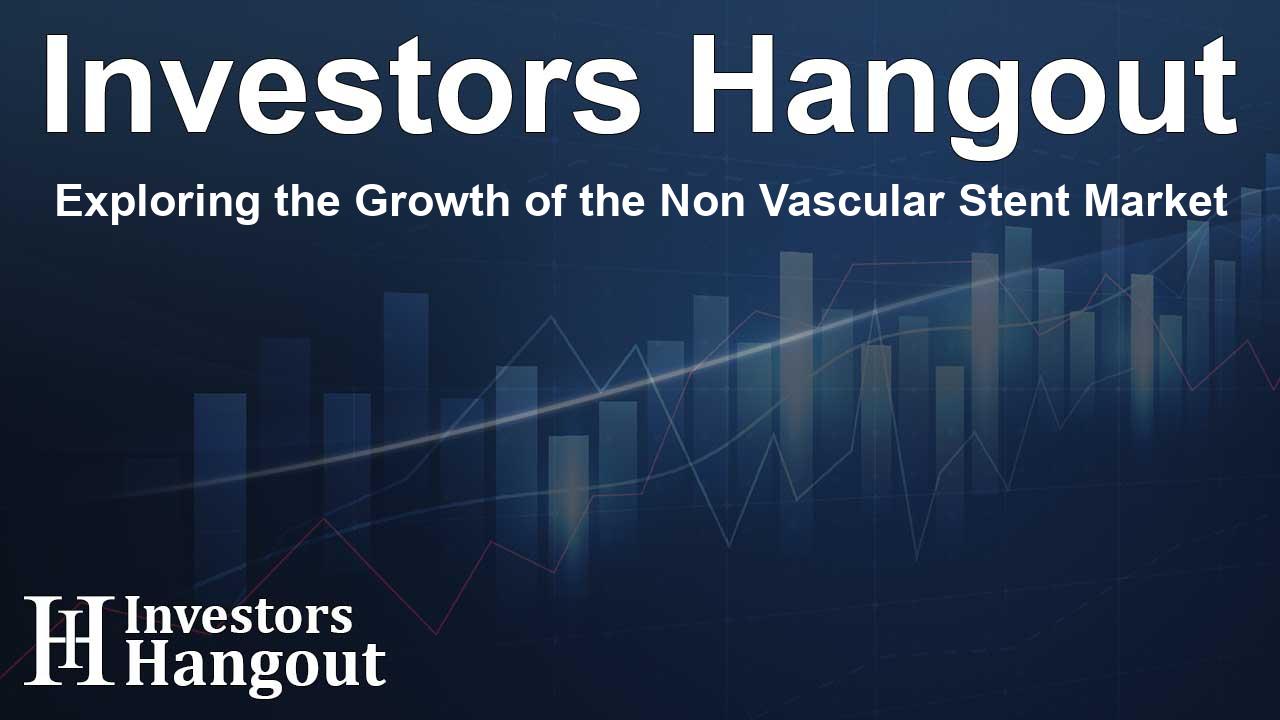Exploring the Growth of the Non Vascular Stent Market

Understanding the Non Vascular Stent Market Growth
The non vascular stent market is on the cusp of a significant transition, with projections estimating its value to soar to $2.7 billion over the next decade. This impressive growth is anticipated to occur at a compound annual growth rate (CAGR) of 4.5% from 2024 to 2035, reflecting the increasing integration of innovative technologies into the healthcare sector.
Key Drivers of Market Expansion
A major factor illuminating the path for this market's ascent is the rise in preference for minimally invasive surgical procedures. Patients consistently demonstrate a greater inclination towards surgical options that promise reduced recovery time and less post-operative discomfort. The push for these techniques is opening doors to a broader application of stent technologies.
Technological Advancements Fueling Growth
Technological breakthroughs continue to emerge, shaping the future landscape of the non vascular stent market. Enhanced stent designs, along with improved biocompatibility and durability, are spearheading the demand for such medical devices. Healthcare professionals are becoming increasingly aware of the advantages provided by advanced materials and innovative stent designs, further propelling market growth.
Regulatory Challenges and Growth Opportunities
While market growth appears promising, regulatory compliance poses potential challenges. Stringent regulations can sometimes stymie speedy advancements in medical technology. Conversely, these regulations also create opportunities for innovation as manufacturers adapt to meet new standards, thereby enhancing their product offerings.
Market Breakdown by Segment
Market segmentation sheds light on the varying dynamics at play within the industry. The urological stents segment has retained its dominant position within this market. In 2023, it commanded a significant share, driven largely by the rising prevalence of urological disorders, including kidney stones and benign prostatic hyperplasia. The demand for minimally invasive techniques has further solidified the segment's position.
Material Types: Non-Metallic Growth
An examination of material types reveals that non-metallic stents are expected to lead the market in the coming years. Their demand is largely influenced by an increase in biodegradable and polymer-based options, as these materials help alleviate long-term complications. The versatility and patient-centric focus of non-metallic stents resonate well within the medical community.
Hospital Sector's Market Dominance
The hospital sector, too, remains a cornerstone of the non vascular stent landscape. With hospitals providing comprehensive infrastructure and specialized medical personnel, they accommodate a greater volume of complex procedures. This segment of the market contributes significantly to the overall revenue, highlighting the critical role hospitals play in patient care and non vascular stent application.
Regional Insights: North America Leads
Regionally, North America holds a commanding share of the non vascular stent market, accounting for considerable revenue figures. The region benefits from a well-established healthcare system, advanced medical technologies, and robust healthcare expenditures. These factors create an environment ripe for sustained growth, positioning North America at the forefront of the market.
Understanding Market Players
Several leading players are actively reshaping the non vascular stent market. Companies like Boston Scientific Corporation, Medtronic Plc, and Cook Group are continually innovating to enhance their market share and influence. Strategic product approvals and expansions have become essential avenues for these players, allowing them to maintain their competitive edge.
Frequently Asked Questions
What is the projected market size of non vascular stents by 2035?
The non vascular stent market is projected to reach $2.7 billion by 2035.
What are the main drivers behind the growth of the non vascular stent market?
The rise in minimally invasive surgeries and advancements in stent technology are key growth drivers.
Which segment currently leads the non vascular stent market?
The urological stents segment maintains its lead, primarily due to the prevalence of urological disorders.
What types of materials are gaining traction in the non vascular stent market?
Non-metallic stents, especially biodegradable and polymer-based options, are gaining popularity.
What role do hospitals play in the non vascular stent market?
Hospitals dominate the market with their advanced infrastructure and capability to perform complex procedures.
About The Author
Contact Thomas Cooper privately here. Or send an email with ATTN: Thomas Cooper as the subject to contact@investorshangout.com.
About Investors Hangout
Investors Hangout is a leading online stock forum for financial discussion and learning, offering a wide range of free tools and resources. It draws in traders of all levels, who exchange market knowledge, investigate trading tactics, and keep an eye on industry developments in real time. Featuring financial articles, stock message boards, quotes, charts, company profiles, and live news updates. Through cooperative learning and a wealth of informational resources, it helps users from novices creating their first portfolios to experts honing their techniques. Join Investors Hangout today: https://investorshangout.com/
The content of this article is based on factual, publicly available information and does not represent legal, financial, or investment advice. Investors Hangout does not offer financial advice, and the author is not a licensed financial advisor. Consult a qualified advisor before making any financial or investment decisions based on this article. This article should not be considered advice to purchase, sell, or hold any securities or other investments. If any of the material provided here is inaccurate, please contact us for corrections.
